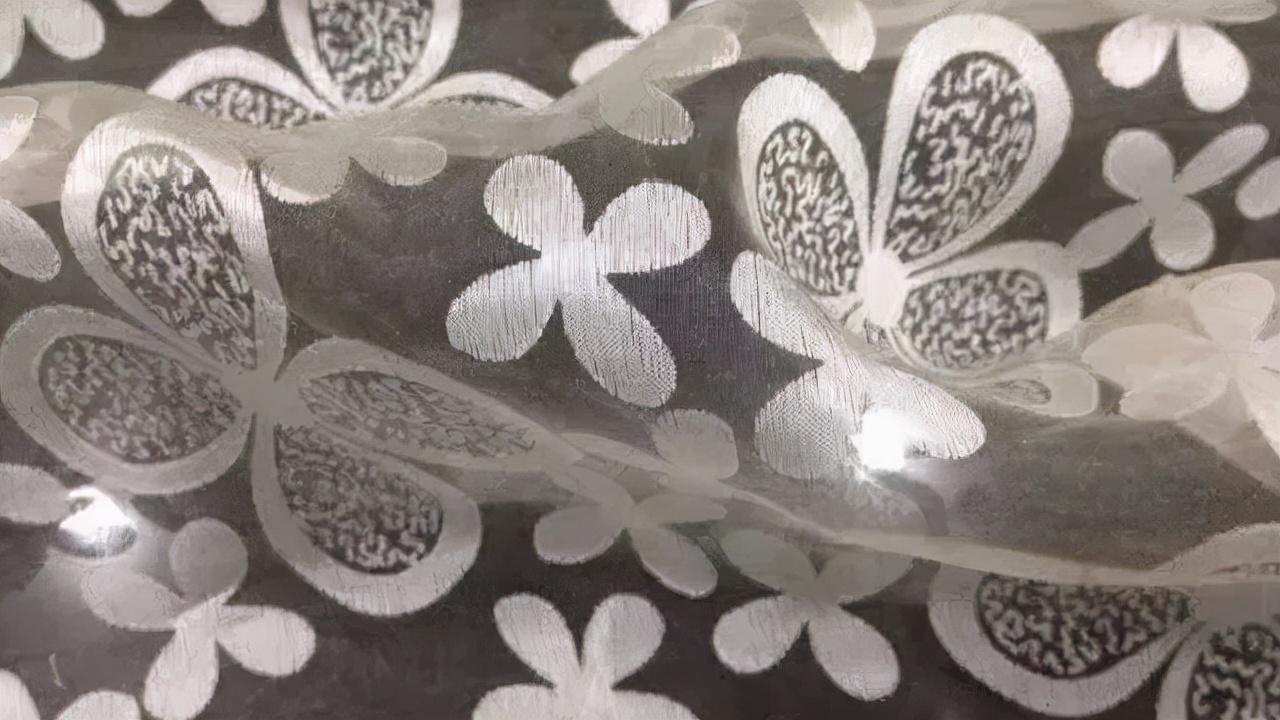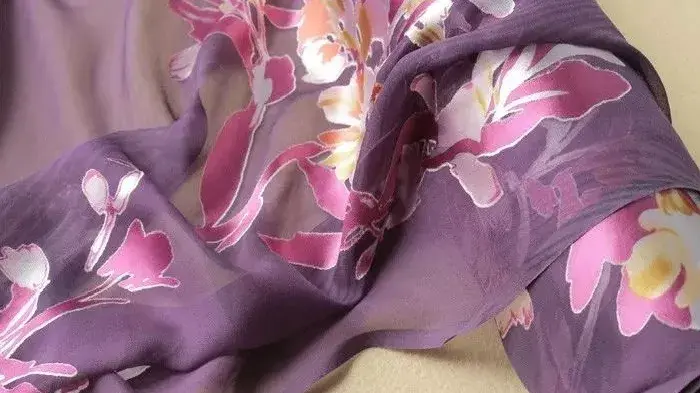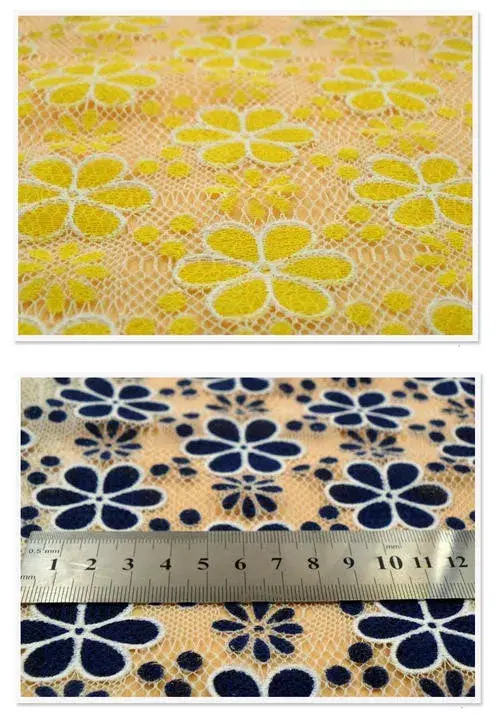Burn-out fabric is also called burned-out fabric. It refers to a printing process that uses chemicals to destroy a certain fiber component in blended, twisted or interwoven fabrics to reveal patterns.
Bad Flower fabric pattern
The surface of burnt-out fabric is uneven, with prominent patterns, clear outlines, smooth feel and translucent visual sense. It can be rotted to reveal patterns, or it can be rotten to remove the base plate to reveal raised patterns.
Common burnout fabrics include burnout velvet, burnout cotton and silk interweave, and burnout polyester-cotton interweave. Burnout fabrics are generally used in home decoration, bedding and other fabrics.

Burnout printing was first used on silk interwoven fabrics, such as burnout silk, burnout velvet, and later on burnout polyester/cotton fabrics and Other fabrics.
Burnout fabrics are made of two different fibers that are interwoven or blended. One fiber can be destroyed by certain chemicals, while the other The fibers are not affected, forming a special style of burnt-out printed fabric, which is usually made of acid-resistant fibers such as silk, nylon, polyester, polypropylene and other fibers interwoven or blended with cellulose fibers such as viscose fiber, cotton, etc. Strong acidic substances are used to mix pulp for printing. After drying, the cellulose is hydrolyzed and carbonized by strong acid. After washing, a pattern with translucent visual sense and concave and convex is obtained. It can be used as decorative fabrics such as curtains, bedspreads, tablecloths, etc., and can also be used as Clothing material.

According to relevant information, China mostly uses polyester-cotton core-spun yarn fabrics, and uses strong acid slurry to print on the fabrics. Sulfuric acid is the preferred strong acid. Acidic salts such as aluminum sulfate and sodium bisulfate can also be used, but the effect is not as good as sulfuric acid.
Bad How to operate floral fabrics
The method isAcidic chemicals, such as sulfuric acid, aluminum sulfate, aluminum trichloride, etc., are added to the acid-resistant burnout slurry. After printing, baking or steaming, and high-temperature carbonization, the part of cotton or viscose fiber printed with the acidic slurry is quilted. It corrodes away without damaging the silk or polyester, and then washes away the fiber residue from the carbonized part of the cotton or viscose fiber. Acid-resistant dyes can also be added to the printing paste to destroy one fiber while dyeing another. Fibers such as silk get colored burnout prints.
Note Matters
The printing paste should be resistant to strong acid, have good permeability, have clear printed outlines, and be easy to wash off. Such pastes include white dextrin, synthetic dragon gum, oil/water emulsified paste, etc. After printing, it is dried, baked at 140°C for 30 seconds, and washed in a rope shape to remove char.
If the baking temperature is too high, the printed area will be dark brown and difficult to clean. If the temperature is not enough, the printed area will be white and opaque, indicating insufficient effect. It is difficult to wash off. Generally, the color of the printed area should be light yellowish brown after baking. Check whether the baking temperature is appropriate and whether the residue on the product is easy to wash away. You can pull the fabric with your hands under tension, so that the residue can be immediately separated from flying. It is suitable.
Polyester-cotton blended fabrics can be printed with aluminum sulfate or sulfuric acid. The sulfuric acid concentration is 98% sulfuric acid 30~33mL/kg. After printing, the temperature is 95~97 ℃ steam for 3 minutes, it is easy to remove the residue during rope washing, but the temperature must be strictly controlled to prevent the printing paste from bleeding.� and polyurethane foaming pulp, the latter has solvent recovery problems, so the former is generally used. Utilizing the properties of the above chemicals, on the one hand, the hollow fabric can be given a three-dimensional effect according to the customer’s requirements, and on the other hand, it can function as a hemlock. Elastic glue printing uses a relatively elastic adhesive. The film has good elasticity and a soft hand feel. It is suitable for burnout printing on pure cotton, polyester-cotton blends, interweaving, and core-spun yarns.

Hollow burnout printing on pure cotton fabrics does not need to consider protecting other fibers. It only requires sufficient acid content and stable printing paste. At the same time Also consider the impact on the foaming slurry.
In order to ensure that the outline of the burnout printing part is clear, for general burnout printing on polyester-containing fabrics, paint white paste is printed on the edge of the burnout pattern. On the one hand, it can enhance the three-dimensional effect of the pattern. On the other hand, it can also fix the organizational structure of the fabric so that the warp and weft yarns of the fabric are not loose and have a certain tensile strength and tearing strength.
The burnout of pure cotton fabric does not exist in the polyester frame, so the thermoplastic resin foam printing method is used to further improve the tensile strength and tearing of the fabric. Strong. Thermoplastic resin foam printing paste is generally composed of thermoplastic resin, foaming agent, stabilizer and colorant. Thermoplastic resin does not necessarily have to have high foaming properties, as long as it can give the fabric a good feel and strength.
Bad Notes on flower printing process
The foam type of the hook line foaming slurry prescription 1 is stretched, and its surface elongation is greater than that of prescription 2 under the same tensile force and time conditions The surface of patterns printed with GN convex offset is easy to break, so it is mostly used for pure cotton burnout printed fabrics with sparse texture. Prescription 3 is used for tight fabrics that are not easy to be de-flopped and have low customer requirements or no special requirements. In addition, overprint white is also used directly.
During washing after foaming, the foaming layer has certain adsorption properties, so it is required that the burnt-out should not be excessively carbonized to avoid black spots on the foaming layer. spots, making washing difficult.
During the screen production process, attention should be paid to reasonable wiring and crimping, and the adhesive in the foaming slurry must have a certain acid resistance. The mesh of foam printing on a flat screen printing machine is generally 80 to 100, and the mesh of burnout printing is generally in the range of 100 to 120.
The number of squeegee times is appropriate so that the printing paste penetrates into the fabric being printed, and the thickness of the printing paste is adjusted at the same time.
After printing, minimize the downtime between each link, especially printing-baking, baking-dry kneading or dry tentering, The time of dry rubbing and washing is to avoid moisture return, causing problems such as difficulty in washing.
Burn-out fabric weave design generally uses plain weave. The following issues should be paid attention to in fabric weave design:
1. Selection of fabric tightness.
The tightness of burnt-out fabrics includes two concepts. One is the tightness of the core-spun yarn part of the fabric.
2. It is the tightness of the fabric mesh part.
If the fabric is too tight, weaving production will be difficult. If the fabric is too tight, the warp and weft yarns will easily shift in the screen part.
3. Selection of burnt-out gray fabrics. The burnt-out gray fabrics available on the market mainly include the following types: polyester or cotton core-spun white cloth, burnout part It has good transparency and is suitable for high-end burnt-out products. Polyester or cotton blended fabrics have poor transparency in burnt-out areas and are suitable for general burnout products.
When designing the drawing draft, designers should pay attention to the following issues: When drawing burnt flowers, appropriate gaps should be left at the pattern wiring, and the lines should be Fine, well-proportioned and accurate. The selection of reed size for weaving is based on the uniform arrangement of warp and weft yarns of burnt-out fabrics. Generally, steel reeds with a higher reed size should be used, as it has a significant effect on improving product quality. In actual production, it is best to wear one warp thread per reed when reeding, and at most two warp threads per reed. In addition, the selection of the twist coefficient of the core-spun yarn is also very closely related to the quality of the burnout fabric.
acing: 1px;”>3. Selection of burnt-out gray fabrics. The burnout gray fabrics available on the market mainly include the following types: : Polyester or cotton core-spun white cloth, with good transparency in burnt-out parts, suitable for high-end burnout products. Polyester or cotton blended fabric, with poor transparency in burnt-out parts, suitable for general burnout products.
When designing the drawing manuscript, designers should pay attention to the following issues: When drawing burnt-out drawings, appropriate gaps must be left at the pattern connections, and the lines must be fine, well-proportioned, and accurate. Use reeds for weaving The selection of burnt-out fabrics is based on the uniform arrangement of warp and weft yarns. Generally, steel reeds with higher reed numbers should be used, which has a significant effect on improving product quality. In actual production, it is best to wear one reed per reed. There are at most two warp yarns per reed. In addition, the selection of the core-spun yarn twist coefficient is also very closely related to the quality of the burnout fabric.







